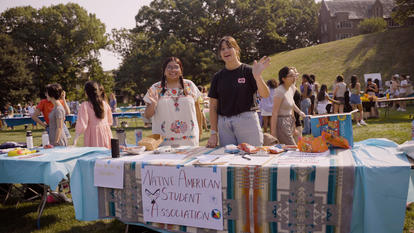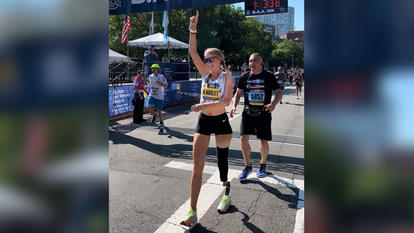2018 Saw Big Surge in Wellesley Student Voting

Big feelings rolled through the Wellesley campus on election night 2016, with word that Hillary Rodham Clinton ’69 had failed in her historic bid to win the U.S. presidency.
Over time, these responses have given way to action. Last year, 52.3 percent of eligible Wellesley students voted in the U.S. midterm elections, a 35.9 percent increase over the 2014 midterms, according to a new report from the Institute for Democracy & Higher Education (IDHE) at Tufts University’s Tisch College of Civic Life
“Next year will be the centennial of the 19th Amendment, which recognized womens’ right to vote,” said Wellesley President Paula A. Johnson. “On the eve of this anniversary, we must re-commit ourselves to ensuring that all of our voices are heard at the ballot box. I think especially of women left behind 100 years ago, the foremothers of those who still struggle for their rightful representation."
The IDHE researchers found that women’s colleges overall boasted the highest 2018 voting rate—50.3 percent—across a broad range of institutional types. Wellesley’s rate, a few points above this average, also marked a huge increase over the previous midterm cycle. In 2014, 16.4 percent of Wellesley students voted, which was 3.3 percent below the average voting rate for all institutions. By contrast, last year, Wellesley clocked in at 13.2 percent above the institutional average of 39.1 percent.
These numbers place Wellesley at the forefront of a national trend. All in all, college students voted at an average rate of 39.1 percent, up from 19.7 percent in 2014, according to the IDHE’s national report. Turnout increases were widespread, with virtually all campuses seeing an uptick from 2014.
Increased student voting helped to elect the most diverse Congress in U.S. history, with more women—and women of color—than ever before. Among these are the first Muslim and Native American women to serve in Congress. More broadly, at least seven Wellesley alumnae were among those sworn in as elected government officials this year.
The IDHE report is based on the institute’s National Study of Learning, Voting and Engagement, the only national study of college-student voting, which examines the voting records of more than 10 million students at more than 1,000 colleges and universities in all 50 states and the District of Columbia. IDHE does not receive any information that could individually identify students or how they voted. FERPA-blocked records are excluded, and thresearchers also adjusted to account for students who are not U.S. citizens.



